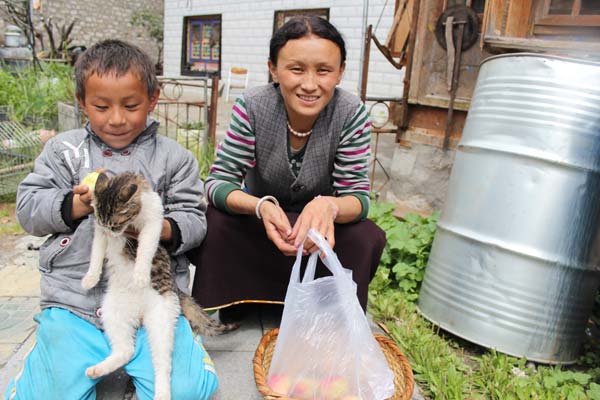
Wangmo and her little son Samjie [Photo/China Tibet Online]
It was nearly 1:00 pm, Wangmo took some peaches in her apron and went out to sell.
She is 27 years old and lives in Zhongguo Vllage, Bayi Township of Nyingchi County. Her family's main source of income is truck renting. And selling peaches is one of her business in summer.
Zhongguo Village is a model village constructed with the aid of Guangdong Province. Twenty kilometers away from the center of the Bayi Township, it is surrounded by flowers and fruit trees.
"You can pick eight peaches for five yuan," smiled Wangmo and asked her son to get some plastic bags.
She sold peaches twice a day and had a rest after lunch. "Along the State Highway 318 and behind the village, there are lots of tourists. They would like to taste local fruits," said the mother.
Wangmo's son is eight years old and is studying in the elementary school of the township. "It's my summer vacation, I can ride the bike!" the boy enjoyed riding bikes with his friends.
Standing in front of the beautiful house, Wangmo and her family led a happy life. "I hope Samjie have a bright future, but he has to study hard," the mother said.
Wangmo's father lives with them. The village committee found a job for him in biogas factory nearby.
"My father used to be a carpenter, but he is too old to do the job now," Wangdo pointed at the wooden room behind her, which was built up by her father decades ago before moving here.
Five years ago, the old Zhongguo Village was all moved to the new site thanks to the housing projects. The village used tolocate along the Nyingyang River and was threatened by debris flow.
In tourist season, Wangmo could gain income between 70 to 100 yuan per day from the peach selling business. The Tibetan woman has never attended school but placed all her hope on her little son.
